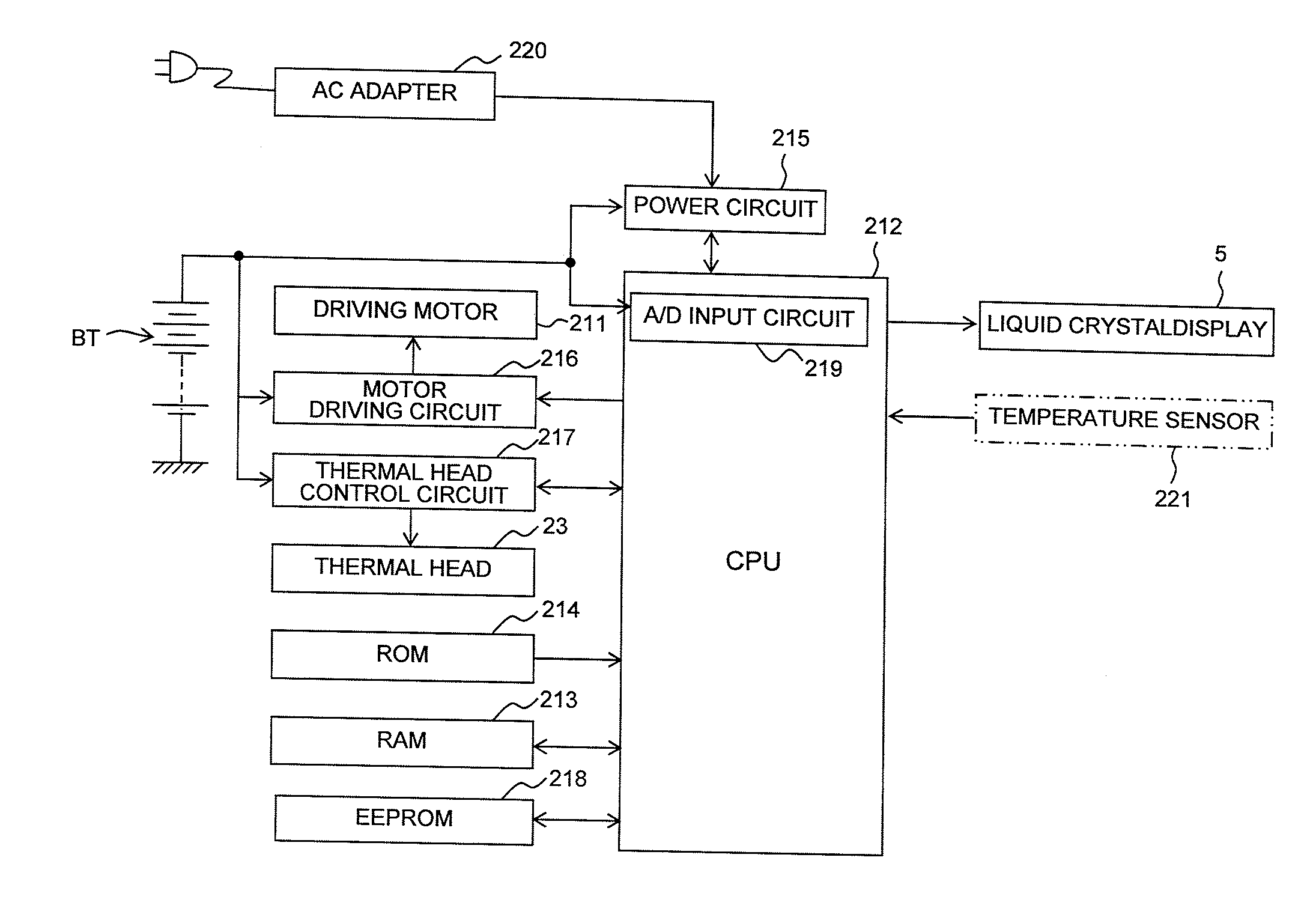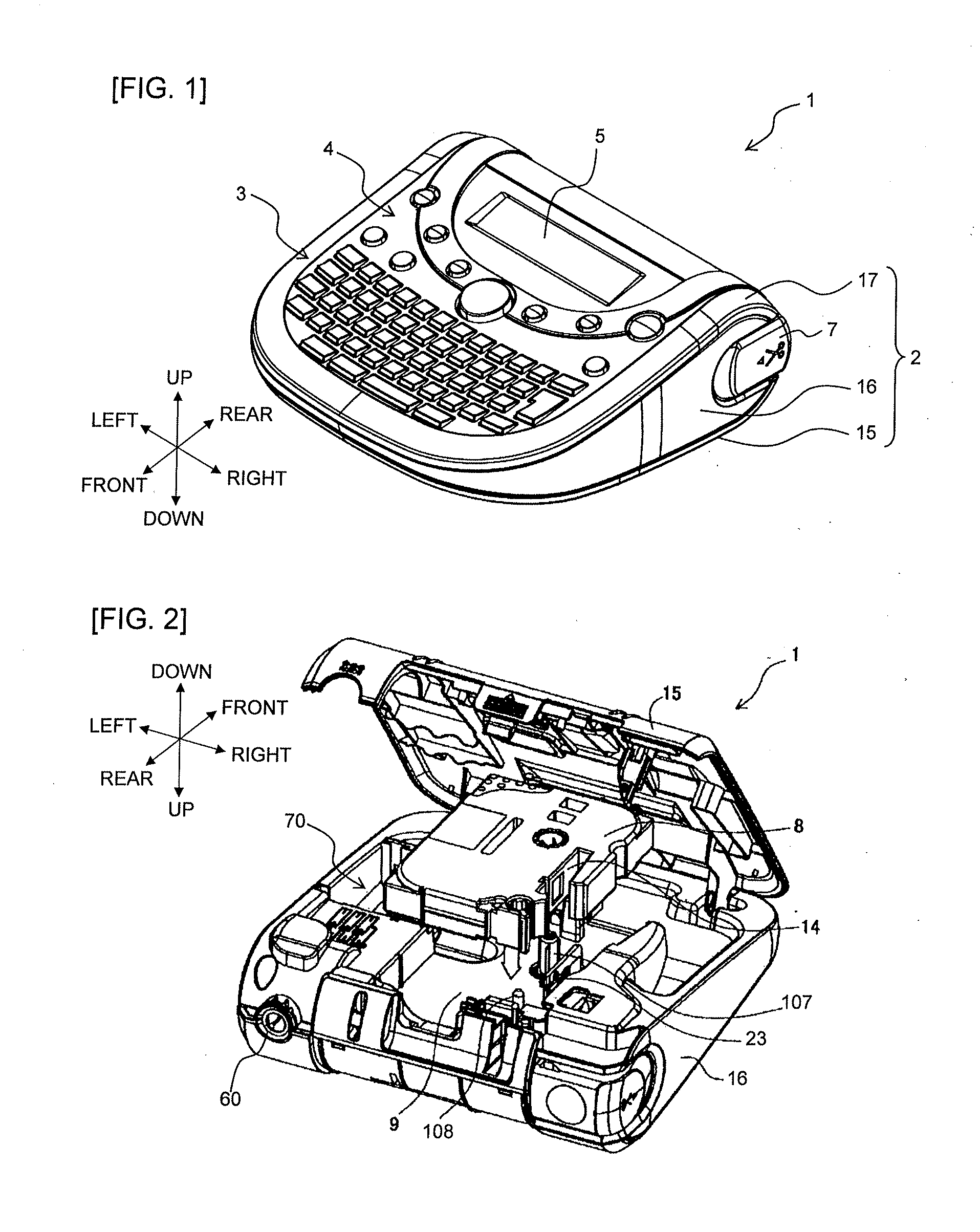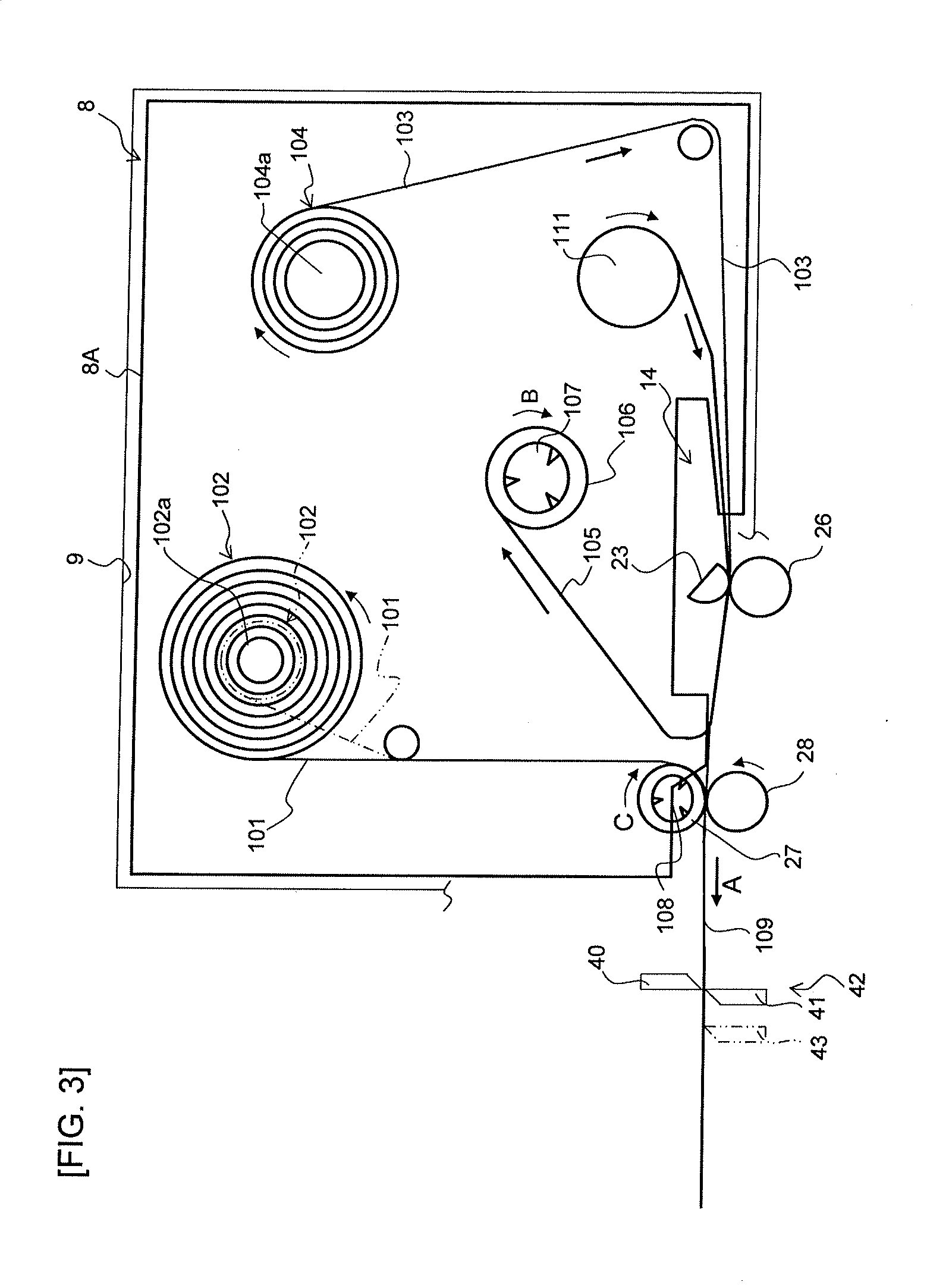Printer
a printing machine and battery technology, applied in the field of printing machines, can solve the problems of operator inability to use up the battery, bad influence on the battery, and discharge state,
- Summary
- Abstract
- Description
- Claims
- Application Information
AI Technical Summary
Benefits of technology
Problems solved by technology
Method used
Image
Examples
Embodiment Construction
[0034]An embodiment of the present disclosure will be described below by referring to the attached drawings.
[0035]In the present embodiment, the present disclosure is applied to a print label producing device 1 as a printer. This print label producing device 1 produces a print label L (See FIG. 5 which will be described later) corresponding to a printed object by cutting a label tape with print on which a desired print has been applied to a predetermined length.
[0036]
[0037]First, an outline configuration of this print label producing device 1 will be described by using FIG. 1. In the present embodiment, the terms, front, rear, left, right, up, and down of the print label producing device 1 refer to the directions illustrated in FIGS. 1, 2 and the like.
[0038]As illustrated in FIGS. 1 and 2, a housing 2 of the print label producing device 1 is composed of a lower cover 15 constituting a lower surface of the device, a lateral cover 16 constituting the side face of the device, and an up...
PUM
 Login to View More
Login to View More Abstract
Description
Claims
Application Information
 Login to View More
Login to View More - R&D
- Intellectual Property
- Life Sciences
- Materials
- Tech Scout
- Unparalleled Data Quality
- Higher Quality Content
- 60% Fewer Hallucinations
Browse by: Latest US Patents, China's latest patents, Technical Efficacy Thesaurus, Application Domain, Technology Topic, Popular Technical Reports.
© 2025 PatSnap. All rights reserved.Legal|Privacy policy|Modern Slavery Act Transparency Statement|Sitemap|About US| Contact US: help@patsnap.com



